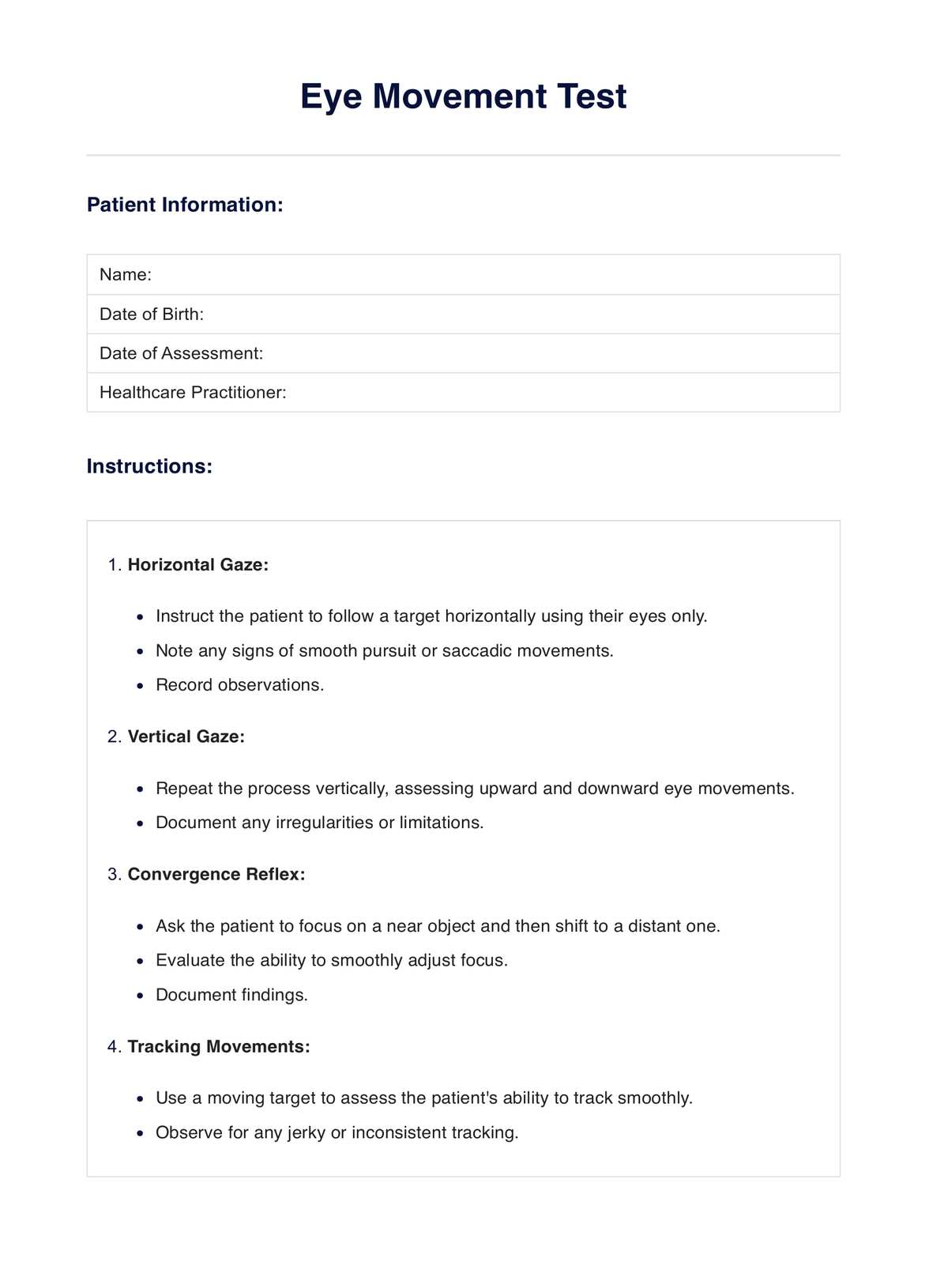Eye Movement Tests detect abnormalities in eye movement that may indicate underlying conditions such as strabismus, nystagmus, or convergence insufficiency. It helps diagnose eye movement disorders and guides appropriate treatment.

Eye Movement Test
Assess eye movement for health concerns with an Eye Movement Test. Evaluate gaze, tracking, and reflexes for comprehensive healthcare screening.
Use Template
Eye Movement Test Template
Commonly asked questions
No, an Eye Movement Test is a non-invasive procedure and typically painless. Patients may experience slight discomfort or eye strain during the test, but it is generally well-tolerated.
The duration of an eye movement test varies depending on the evaluation's complexity and the patient's cooperation. It typically takes 10 to 20 minutes to complete.
EHR and practice management software
Get started for free
*No credit card required
Free
$0/usd
Unlimited clients
Telehealth
1GB of storage
Client portal text
Automated billing and online payments











